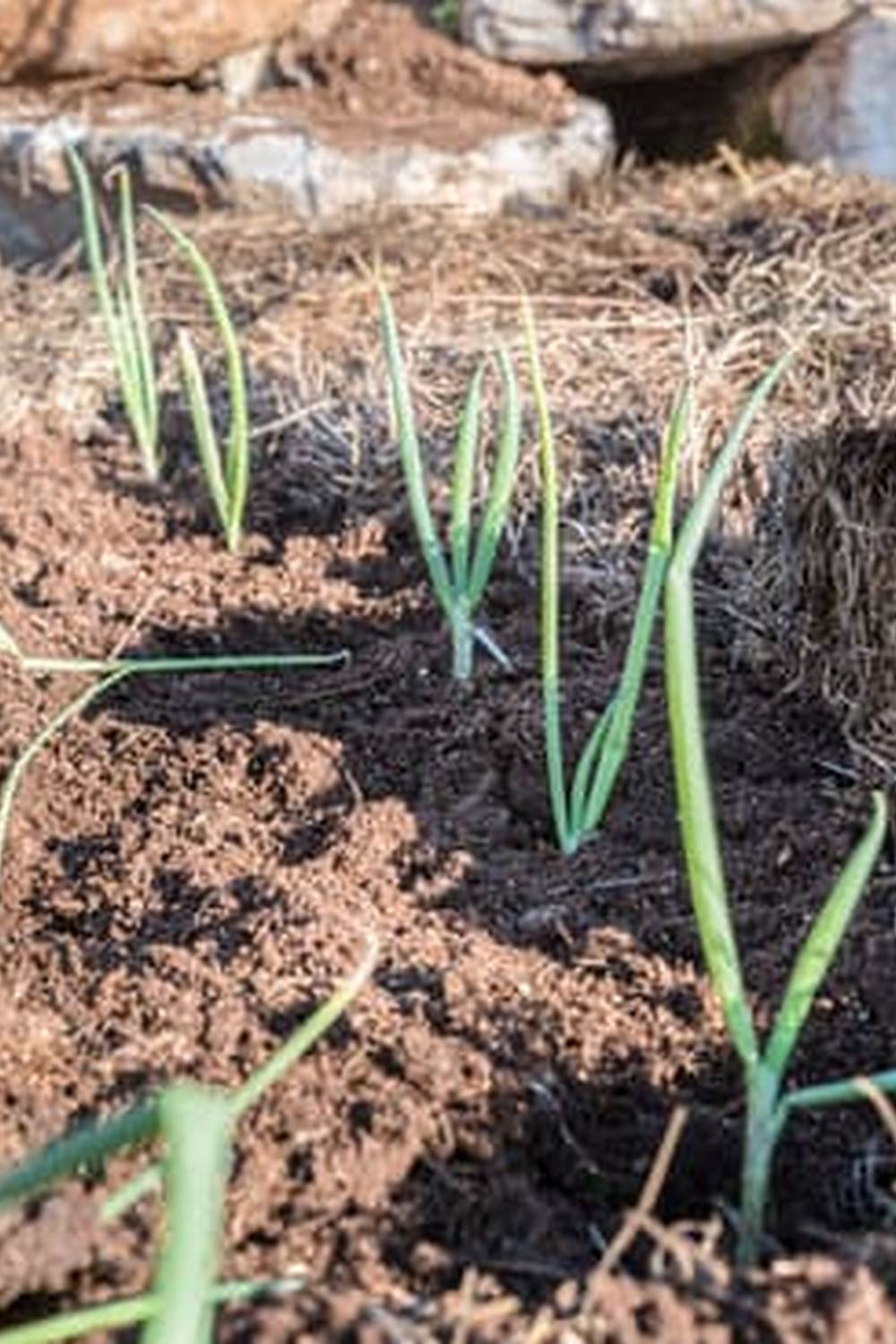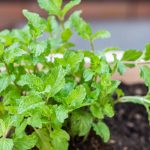The use of lime in vegetable gardens is a widely practiced technique that has been proven to provide numerous benefits for plant growth and overall garden health. In this article, we will explore the various advantages of incorporating lime into your vegetable garden, as well as provide guidance on understanding soil pH, choosing the right type of lime, proper application methods, and managing common pests and diseases.
By the end of this article, you will have a comprehensive understanding of how lime can maximize the potential of your vegetable garden.
Soil pH plays a crucial role in the success of a vegetable garden, and lime can help balance acidity levels to create an optimal environment for plant growth. Additionally, it is important to choose the right type of lime for your specific soil conditions in order to effectively raise pH levels. By understanding these fundamental principles, you can ensure that your vegetables receive the necessary nutrients for healthy development.
In addition to discussing how lime can benefit soil pH and nutrient availability, this article will also delve into using lime as a tool for managing common pests and diseases in vegetable gardens. Furthermore, we will provide valuable tips for safely and effectively using lime in your garden to promote optimal growing conditions. Follow along to learn how incorporating lime into your vegetable garden can lead to bountiful harvests and thriving plants.
Understanding Soil pH
Soil pH is a crucial factor that affects the growth and health of plants in vegetable gardens. A balanced soil pH level is essential for ensuring that plants have access to necessary nutrients for optimal growth. When the soil becomes too acidic, it can negatively impact the availability of important nutrients such as nitrogen, phosphorus, and potassium. This is where the use of lime in vegetable gardens can be beneficial.
Here are some key points to understand about soil pH and how lime can help balance acidity:
- Soil pH levels below 6.0 are considered acidic and may require treatment with lime.
- Lime works to increase the soil’s pH level, making it less acidic and more alkaline.
- By raising the pH level of the soil, lime helps improve nutrient availability for plants, promoting healthier growth and better yields.
It is important for gardeners to test their soil’s pH levels before applying lime to ensure they are using the right amount. There are different types of lime available, including dolomitic lime and calcitic lime, each with its own unique properties. When selecting the right type of lime for your vegetable garden, consider factors such as magnesium content (for dolomitic lime) and calcium content (for calcitic lime) based on your soil’s specific needs.
Incorporating lime into garden soil can be done through various application methods such as tilling or topdressing. However, it’s important to follow recommended guidelines for application rates to avoid over-liming the soil, which can cause its own set of issues. With careful consideration and proper application, the use of lime in vegetable gardens can effectively balance acidity and create an optimal growing environment for healthy, thriving plants.
Choosing the Right Type of Lime for Your Vegetable Garden
When it comes to choosing the right type of lime for your vegetable garden, there are a few options to consider. The two most common types of lime used in gardens are calcitic lime and dolomitic lime.
Calcitic lime is made up of calcium carbonate, which helps to raise the pH level of acidic soils. This type of lime is ideal for gardens that have a low magnesium content and are in need of a pH boost. On the other hand, dolomitic lime is a mixture of calcium carbonate and magnesium carbonate, making it beneficial for gardens with low levels of both calcium and magnesium.
To determine the best type of lime for your vegetable garden, it’s important to conduct a soil test. This will provide insight into the current pH level as well as the existing nutrient levels in your soil. Once you have this information, you can make an informed decision about whether calcitic or dolomitic lime is more suitable for your garden.
When applying lime to your vegetable garden, there are different methods you can use depending on the type of lime and the condition of your soil. Some common application methods include:
- Broadcasting: Sprinkling powdered or granular lime evenly over the soil surface.
- Incorporation: Mixing powdered or granular lime into the soil using a tiller or garden fork.
- Liquid Lime: Applying liquid forms of lime directly onto the soil for faster results.
By choosing the right type of lime and utilizing proper application methods, you can effectively raise the pH level and improve nutrient availability in your vegetable garden soil.
In addition to considering the type and application method of lime, timing is also crucial when incorporating it into your vegetable garden. It’s best to apply lime in the fall before planting season or in early spring to give it time to react with the soil before planting. Regular soil testing will also help monitor pH levels and adjust lime applications as needed to maintain optimal growing conditions for your vegetables.
Application Methods
When it comes to incorporating lime into your garden soil, there are a few methods you can use to ensure that the application is effective. One common method is to spread the lime evenly over the soil surface and then incorporate it into the top few inches of the soil using a tiller or rake. This helps to ensure that the lime is distributed evenly throughout the soil, which is important for balancing pH levels.
Another method for incorporating lime into your garden soil is to mix it with compost or mulch before applying it to the soil. This can help to prevent the lime from clumping together and also provides additional organic matter to the soil, which can improve its overall structure and fertility.
It’s important to note that the effectiveness of lime application can vary depending on the type of lime used and the current pH level of your soil. It’s always a good idea to conduct a soil test before applying lime, as this will help you determine how much lime is needed to achieve the desired pH level.
Here are some key points for incorporating lime into your garden soil:
- Spread it evenly over the soil surface
- Use a tiller or rake to incorporate it into the top few inches of soil
- Mix it with compost or mulch before applying
- Conduct a soil test before application
| Method | Description |
|---|---|
| Spreading | Spread lime evenly over soil surface and incorporate using a tiller or rake |
| Mixing with compost or mulch | Mixing lime with organic matter before applying to prevent clumping and improve soil structure |
| Soil testing | Conduct a soil test before application to determine amount needed for desired pH level |
Effects on Soil Nutrient Availability
When it comes to vegetable gardening, maintaining the right soil pH is crucial for healthy plant growth. The use of lime in vegetable gardens can have a significant impact on soil nutrient availability, ultimately affecting the overall health and productivity of your plants.
One of the primary ways in which lime affects plant growth is by neutralizing acidic soil. Soil that is too acidic can hinder the availability of essential nutrients such as nitrogen, phosphorus, and potassium. By raising the pH level of the soil, lime helps to unlock these nutrients, making them more accessible to plants. This improved nutrient availability can lead to stronger, healthier plants with better resistance to disease and higher yields.
There are several types of lime that can be used in vegetable gardens, including calcitic limestone and dolomitic limestone. Both types contain calcium carbonate, which is effective at raising soil pH. Additionally, dolomitic limestone also contains magnesium carbonate, providing an additional benefit for plant growth.
Incorporating lime into your garden soil is a relatively simple process. It can be applied using a spreader for larger areas or by hand for smaller plots. After application, it’s important to mix the lime thoroughly into the soil to ensure even distribution and maximum effectiveness.
The timing of lime application is also crucial, as it may take several months for the full effects to be realized. Generally, fall is an ideal time to apply lime so that it has time to react with the soil before the next growing season.
| Benefit | Information |
|---|---|
| Neutralizes acidic soil | Lime raises the pH level of acidic soil, making nutrients more available to plants. |
| Types of Lime | Calcitic limestone and dolomitic limestone are common types used in vegetable gardens. |
| Application Process | Lime can be applied using a spreader or by hand and should be thoroughly mixed into the soil. |
Managing Common Vegetable Garden Pests and Diseases With Lime
When it comes to managing common pests and diseases in your vegetable garden, the use of lime can be a valuable tool. Lime has been shown to help control certain pests and diseases that can damage or destroy your vegetable plants. One of the main benefits of using lime in this capacity is its ability to create an environment that is less hospitable to harmful organisms.
The alkaline nature of lime can help deter or even eliminate certain types of pests, such as slugs and snails, which are often problematic in vegetable gardens. Additionally, the use of lime can also help prevent the occurrence of common plant diseases like clubroot in brassicas and blossom end rot in tomatoes by maintaining the appropriate soil pH levels. This can ultimately lead to healthier and more productive vegetable plants.
To manage common vegetable garden pests and diseases with lime, it is important to incorporate it into your garden soil correctly. This may involve conducting a soil test to determine the current pH levels and then applying the appropriate amount of lime based on the results.
Additionally, it’s essential to follow recommended application methods and safety guidelines when using lime in your garden. By doing so, you can effectively harness the pest and disease-fighting properties of lime while promoting a thriving vegetable garden.
Tips for Using Lime Safely and Effectively in Your Vegetable Garden
Protective Gear and Precautions
When using lime in your vegetable garden, it’s important to take necessary precautions to protect yourself from potential skin and respiratory irritation. Always wear gloves, long sleeves, pants, and eye protection when handling lime. Additionally, consider wearing a mask to prevent inhalation of lime dust. Be sure to work with lime on a dry, calm day to minimize the risk of inhaling lime particles.
Proper Application Technique
To ensure the safe and effective use of lime in your vegetable garden, it’s essential to follow proper application techniques. Spread the recommended amount of lime evenly across the soil surface, and then incorporate it into the top few inches of soil using a rake or garden hoe. Avoid applying excessive amounts of lime, as this can lead to an imbalance in soil pH levels.
Maintaining pH Balance
Regular testing of your soil’s pH levels is crucial for maintaining the optimal growing conditions for your vegetables. Keep in mind that while lime can help balance acidity in your garden soil, it is not a quick fix. It may take several months for the full effects of lime application to be realized. Test your soil annually and adjust the amount of lime used based on the results to ensure that your vegetable plants continue to thrive.
Conclusion
In conclusion, the use of lime in vegetable gardens can provide numerous benefits for the overall health and productivity of your plants. By understanding soil pH and choosing the right type of lime for your garden, you can effectively balance acidity and create an optimal growing environment for your vegetables. Additionally, incorporating lime into your garden soil using the appropriate application methods can help improve nutrient availability and ultimately promote healthier plant growth.
Furthermore, the use of lime can also play a role in managing common vegetable garden pests and diseases, making it a valuable tool for maintaining a thriving garden ecosystem. By following safety guidelines and implementing proper techniques for using lime, you can ensure that you are maximizing its potential benefits while minimizing any potential risks to both your plants and yourself.
In essence, by incorporating lime into your vegetable garden routine, you can create a more balanced and fertile growing environment that will support the health and productivity of your plants. With careful consideration of soil pH levels, proper application methods, and ongoing maintenance, you can harness the power of lime to help your vegetable garden reach its full potential.
Frequently Asked Questions
When Should I Add Lime to My Vegetable Garden?
Adding lime to your vegetable garden should be done based on the results of a soil pH test. If the soil is too acidic, adding lime can help raise the pH level and create a more favorable environment for your vegetables.
Is Lime Good for a Vegetable Garden?
Lime can be beneficial for a vegetable garden if the soil is too acidic. It helps to neutralize the acidity, providing a more balanced pH level that allows plants to access essential nutrients more effectively. However, it’s important not to overdo it with lime application.
What Vegetables Don’t Like Lime?
Some vegetables don’t thrive in alkaline soil conditions, so they may not like lime added to the garden. These typically include acid-loving plants such as potatoes, peppers, tomatoes, and blueberries. It’s important to research the specific preferences of each vegetable before adding lime to your garden.

If you’re looking to get into vegetable gardening, or are just looking for some tips on how to make your current garden better, then you’ve come to the right place! My name is Ethel and I have been gardening for years. In this blog, I’m going to share with you some of my best tips on how to create a successful vegetable garden.





